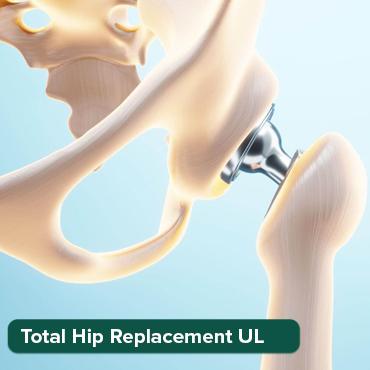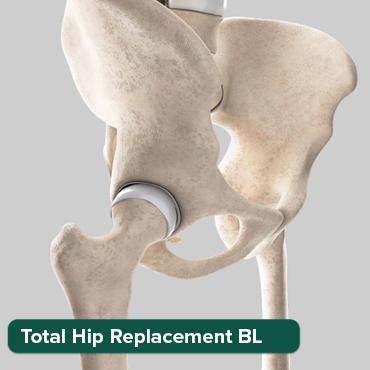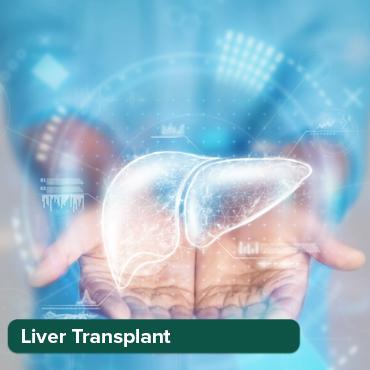
Prostate Cancer Symptoms: Early Detection Saves Lives
16 Sep, 2023
 Healthtrip
HealthtripIntroduction
Prostate cancer, a condition primarily affecting men, is a topic of significant concern in the realm of men's health. Understanding its symptoms, risk factors, and early detection methods is crucial for timely intervention and improved prognosis. In this comprehensive blog, we'll delve deep into prostate cancer symptoms, highlighting their significance and providing valuable insights for informed healthcare decisions.
Transform Your Beauty, Boost Your Confidence
Find the right cosmetic procedure for your needs.

We specialize in a wide range of cosmetic procedures

I. The Prostate and Prostate Cancer: An Overview
Before delving into symptoms, let's begin with a brief overview. The prostate is a small, walnut-sized gland located beneath the bladder, surrounding the urethra. It plays a pivotal role in male reproductive health, secreting fluids that nourish and transport sperm. Unfortunately, it's also susceptible to cancer.
II. Common Prostate Cancer Symptoms
Recognizing the early signs of prostate cancer can be challenging as it often develops slowly and remains asymptomatic in its initial stages. However, as the disease progresses, specific symptoms may become evident. These include:
A. Urinary Changes
B. Blood in Urine or Semen
The presence of blood in urine (hematuria) or semen can be alarming and should prompt an immediate medical evaluation. These symptoms can also be linked to other health conditions, so a thorough examination is crucial.
C. Sexual Dysfunction
Prostate cancer may lead to erectile dysfunction, a persistent inability to achieve or sustain an erection. This may be due to the cancer itself or its treatment.
III. Advanced Symptoms and Complications
As prostate cancer progresses to advanced stages, it can manifest in more severe symptoms:
A. Pelvic and Bone Pain
Individuals with advanced prostate cancer may experience persistent pain in the pelvic region, lower back, hips, or upper thighs. This discomfort often accompanies more advanced disease stages.
Most popular procedures in India
Total Hip Replacemen
Upto 80% off
90% Rated
Satisfactory

Total Hip Replacemen
Upto 80% off
90% Rated
Satisfactory

Total Hip Replacemen
Upto 80% off
90% Rated
Satisfactory

ASD Closure
Upto 80% off
90% Rated
Satisfactory

Liver Transplant Sur
Upto 80% off
90% Rated
Satisfactory

B. Unexplained Weight Loss
Unintentional weight loss can occur as the cancer advances, and it's often accompanied by other concerning symptoms.
C. Bone Metastases
When prostate cancer spreads to the bones, bone pain and fractures can occur. The spine, hips, and ribs are commonly affected.
IV. Risk Factors and Early Detection
Understanding your risk factors for prostate cancer is vital:
A. Age: Age is a significant factor. Prostate cancer is most common in men over the age of 50, with the risk increasing with age.
B. Family History: A family history of prostate cancer can elevate your risk. If a close relative has had the disease, your chances of developing it may be higher.
C. Race: African American men face a higher risk of prostate cancer than men of other racial backgrounds.
D. Early Detection Methods
Early detection is the key to successful treatment. Two primary screening methods are employed:
- PSA Test (Prostate-Specific Antigen): This blood test measures the levels of PSA, a protein produced by the prostate. Elevated PSA levels can indicate potential issues, but they can also result from non-cancerous conditions.
- Digital Rectal Examination (DRE): In a DRE, a healthcare provider manually examines the prostate by inserting a gloved, lubricated finger into the rectum. They assess the size, shape, and texture of the gland, searching for any abnormalities.
If your PSA levels are elevated, or if any irregularities are found during a DRE, further diagnostic steps like a biopsy may be recommended.
V. Prostate Cancer Staging
To better understand the progression of prostate cancer, it's essential to know about the staging system. Prostate cancer is staged from I to IV, with subcategories within each stage. Staging helps determine the extent of cancer and guides treatment decisions:
A. Stage I: At this stage, the cancer is confined to the prostate and is usually small and slow growing, It's often detected incidentally during surgery for another prostate issue or through a needle biopsy prompted by elevated PSA levels.
B. Stage II: Stage II prostate cancer is still confined to the prostate but may be larger or more aggressive than in Stage I.
C. Stage III: In Stage III, the cancer has spread beyond the prostate capsule but has not reached distant sites. It may involve nearby tissues or the seminal vesicles.
D. Stage IV: This is an advanced stage where cancer has spread to distant parts of the body, typically the bones, lymph nodes, or other organs.
Understanding the stage of your prostate cancer is crucial for determining the appropriate treatment strategy.
VI. Treatment Options
Treatment for prostate cancer varies depending on factors like the stage at diagnosis, overall health, and personal preferences. Common treatment options include:
A. Active Surveillance: For slow-growing, early-stage prostate cancer, watchful waiting or active surveillance may be recommended. This approach involves monitoring the cancer without immediate treatment, intervening if it becomes more aggressive.
B. Surgery: Surgical options include radical prostatectomy, where the entire prostate gland is removed, and lymph nodes may be taken out if cancer has spread to them.
C. Radiation Therapy: This treatment uses high-energy rays to target and kill cancer cells. It may be used as the primary treatment or alongside surgery.
D. Hormone Therapy: Also known as androgen deprivation therapy, this treatment aims to lower the levels of male hormones like testosterone, which can fuel prostate cancer growth.
E. Chemotherapy: Chemotherapy drugs can be used in cases where cancer has spread to distant parts of the body. They work by killing fast-growing cells, including cancer cells.
F. Immunotherapy and Targeted Therapy: These newer treatment approaches aim to stimulate the immune system or target specific molecules involved in cancer growth.
VII. Living with Prostate Cancer
A prostate cancer diagnosis can be challenging, but many men live fulfilling lives after treatment. Here are some important aspects to consider:
A. Support and Coping: Seek emotional support from friends, family, or support groups. Coping with a cancer diagnosis is often easier when you have a strong support network.
B. Lifestyle Choices: Maintaining a healthy lifestyle with a balanced diet, regular exercise, and stress management can help improve overall well-being.
C. Follow-Up Care: Regular follow-up visits with your healthcare team are crucial to monitor your progress and address any potential side effects or complications.
D. Advocating for Yourself: Be an active participant in your healthcare journey. Ask questions, seek second opinions if necessary, and stay informed about your treatment options.
VIII. Living with Prostate Cancer
A prostate cancer diagnosis can be challenging, but many men live fulfilling lives after treatment. Here are some important aspects to consider:
A. Support and Coping: Seek emotional support from friends, family, or support groups. Coping with a cancer diagnosis is often easier when you have a strong support network.
B. Lifestyle Choices: Maintaining a healthy lifestyle with a balanced diet, regular exercise, and stress management can help improve overall well-being.
C. Follow-Up Care: Regular follow-up visits with your healthcare team are crucial to monitor your progress and address any potential side effects or complications.
D. Advocating for Yourself: Be an active participant in your healthcare journey. Ask questions, seek second opinions if necessary, and stay informed about your treatment options.
Watch more : Healthtrip Testimonials
Conclusion
Prostate cancer is a complex condition, and recognizing its symptoms, risk factors, and treatment options is essential for informed decision-making. By understanding the nuances of this disease, its stages, and available treatments, individuals and their healthcare providers can work together to create a tailored approach to managing and, in many cases, successfully treating prostate cancer. Regular screenings, awareness, and proactive healthcare choices are pivotal in maintaining good prostate health and overall well-being.
Wellness Treatments
Give yourself the time to relax
Lowest Prices Guaranteed!

Lowest Prices Guaranteed!







